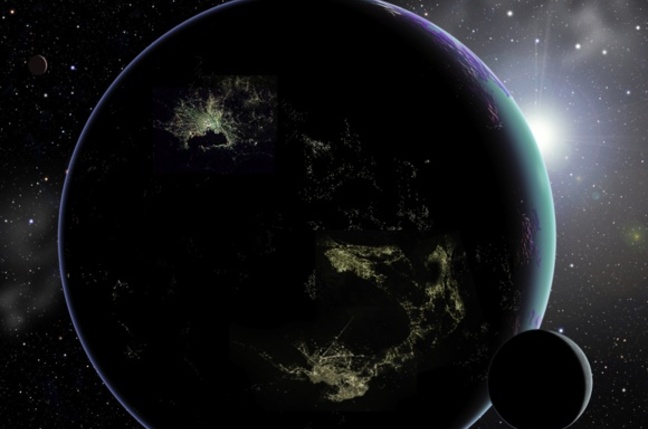They're evidently here - nothing else makes sense
“The ingredients for life are plentiful, and we now know that habitable environments are plentiful,” says Professor Charley Lineweaver, a down-under astrophysicist.
Good planets in the "goldilocks" zone which is neither too hot nor too cold are much harder to detect with Kepler, which is a shame as these are the planets which might be home to alien life - or alternatively, home one day to transplanted Earth life including human colonists, once we've cracked that pesky interstellar travel problem.
However there exists a thing called the Titius-Bode relation - aka Bode's Law - which can be used, once you know where some inner planets are, to predict where ones further out will be found.
Assuming Bode's Law works for other suns as it does here, and inputting the positions of known inner exoplanets found by Kepler, Lineweaver and Bovaird found that on average a star in our galaxy has two planets in its potentially-habitable zone.
That doesn't mean there are habitable or inhabited planets at every star, of course. Even here in our solar system, apparently lifeless (and not very habitable) Mars is in the habitable zone.
Even so, there are an awful lot of planets in the galaxy, so some at least ought to have life on them, and in some cases this life ought to have achieved a detectable civilisation. Prof Lineweaver admits that the total lack of any sign of this is a bit of a puzzler.
"The universe is not teeming with aliens with human-like intelligence that can build radio telescopes and space ships," admits the prof. "Otherwise we would have seen or heard from them.
“It could be that there is some other bottleneck for the emergence of life that we haven’t worked out yet. Or intelligent civilisations evolve, but then self-destruct.”
Of course, humans - some approximations of which have been around for some hundreds of thousands of years, perhaps - have only had civilisation of any kind in any location for a few thousand of those years. Our civilisation has only risen to levels where it could be detectable across interstellar distances very recently.
There may be many planets out there inhabited by intelligent aliens who either have no civilisation at all, or only primitive civilisation. There may be quite a few who have reached or passed the stage of emitting noticeable amounts of radio or other telltale signs, but those emissions either will not reach us for hundreds of thousands of years - or went past long ago.
It would seem reasonable to suspect that there are multitudes of worlds out there where life exists in plenty but has never become intelligent, as Earth life was for millions of years before early humans began using tools really quite recently.
But the numbers are still such that the apparent absence of star-travelling aliens could make you worry about the viability of technological civilisation if, like Professor Lineweaver, you learn your astrophysics out of textbooks and lectures (and publish your research, as we see here, in hefty boffinry journals like the Monthly Notices of the Royal Astronomical Society).
But if movies, speculofictive novels and TV have taught us anything here on the Reg alien life desk, it is that in fact the galaxy is swarming with star-travelling aliens (and/or humans taken secretly from planet Earth for mysterious purposes in the past, or perhaps humans from somewhere else etc).
The reason we don't know about them is that they don't want us to. And that leads us to the most myst
Source

No comments:
Post a Comment
Note: Only a member of this blog may post a comment.